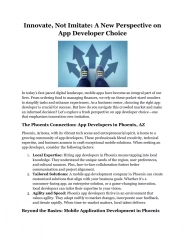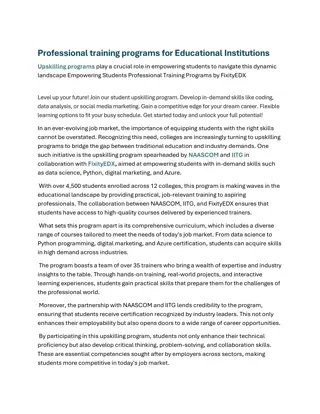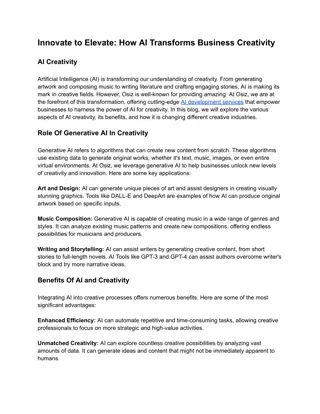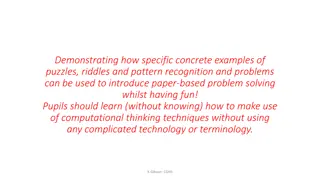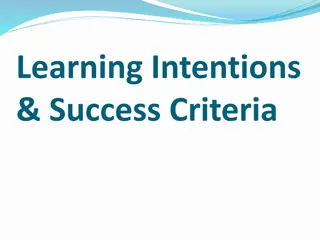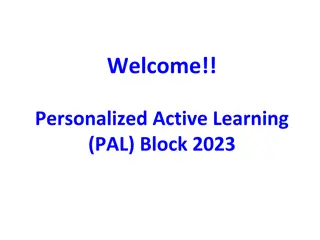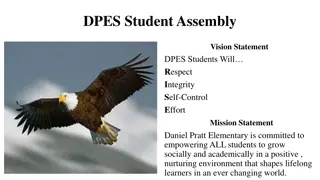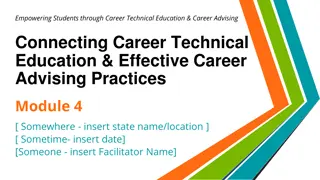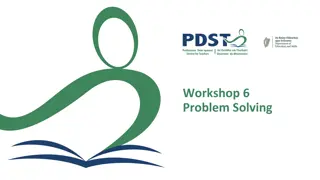Problem-Based Learning: Empowering Students to Innovate
Problem-based learning (PBL) encourages students to drive their education by tackling real-world issues, fostering problem-solving skills, and promoting collaboration. This approach challenges students to think critically, make decisions, and work in groups to solve complex problems across various subjects. The benefits include empowering students to be innovative, creative, and collaborative in their learning journey.
Download Presentation

Please find below an Image/Link to download the presentation.
The content on the website is provided AS IS for your information and personal use only. It may not be sold, licensed, or shared on other websites without obtaining consent from the author.If you encounter any issues during the download, it is possible that the publisher has removed the file from their server.
You are allowed to download the files provided on this website for personal or commercial use, subject to the condition that they are used lawfully. All files are the property of their respective owners.
The content on the website is provided AS IS for your information and personal use only. It may not be sold, licensed, or shared on other websites without obtaining consent from the author.
E N D
Presentation Transcript
StudyMafia.Org Problem Based Learning Submitted Studymafia.org Studymafia.org Submitted To: To: Submitted Submitted By: By: Studymafia.org Studymafia.org
Table Contents Definition Introduction Aspects of Problem Based Learning Benefits of Problem Based Learning Examples of Problem Based Learning Conclusion 2
Definition Problem-based learning (PBL) is a teaching style that pushes students to become the drivers of their learning education. 3
Introduction Problem-based learning uses complex, real-world issues as the classroom's subject matter, encouraging students to develop problem-solving skills and learn concepts instead of just absorbing facts. This can take shape in a variety of different ways. For example, a problem-based learning project could involve students pitching ideas and creating their own business plans to solve a societal need. Students could work independently or in a group to conceptualize, design, and launch their innovative product in front of classmates and community leaders. 4
Aspects of Problem Based Learning Problem-based learning can be applied to any school subject, from social studies and literature to mathematics and science. No matter the field, a good problem-based learning approach should embody features like: Challenging students to understand classroom concepts on a deeper level. 6
Aspects of Problem Based Learning Pushing students to make decisions they're able to defend. Clearly connecting current course objectives to previous courses and knowledge. Encouraging students to work as a group to solve the complex issue at hand. Engaging students to solve an open-ended problem in multiple complex stages. 7
Benefits of Problem Based Learning Student-led learning is one of the most empowering ways to seat students at the forefront of their own educational experience. It pushes students to be innovative, creative, open-minded, and logical. It also offers opportunities to collaborate with others in a hands-on, active way. 8
Benefits of Problem Based Learning Promote self-learning: As a student-centered approach, problem- based learning pushes kids to take initiative and responsibility for their own learning. As they're pushed to use research and creativity, they develop skills that will benefit them into adulthood. 9
Benefits of Problem Based Learning Highly engaging: Instead of sitting back, listening and taking notes, problem-based learning puts students in the driver's seat. They have to stay sharp, apply critical thinking, and think outside the box to solve problems. 10
Benefits of Problem Based Learning Develop transferable skills: The abilities students develop don't just translate to one classroom or subject matter. They can be applied to a plethora of school subjects as well as life beyond, from taking leadership to solving real- world dilemmas. 11
Benefits of Problem Based Learning Improve teamwork abilities: Many problem-based learning projects have students collaborate with classmates to come up with a solution. This teamwork approach challenges kids to build skills like collaboration, communication, compromise, and listening. 12
Benefits of Problem Based Learning Encourage intrinsic rewards: With problem-based learning projects, the reward is much greater than simply an A on an assignment. Students earn the self-respect and satisfaction of knowing they've solved a riddle, created an innovative solution, or manufactured a tangible product. 13
Examples of Problem Based Learning Maritime discovery: Students explore maritime culture and history through visits to a nearby maritime museum. They're tasked with choosing a specific voyage, researching it, and crafting their own museum display. Throughout their studies, they'll create a captain's log, including mapping out voyages and building their own working sextant. 14
Examples of Problem Based Learning Urban planning: Perfect for humanities classes, this example challenges students to observe and interview members of their community and determine the biggest local issue. They formulate practical solutions that they will then pitch to a panel of professional urban planners. 15
Examples of Problem Based Learning Zoo habitats: This scientific example starts with a visit to a local zoo. Students use their observations and classroom knowledge to form teams and create research-supported habitat plans, presented to professional zoologists. 16
Examples of Problem Based Learning Codebreakers: Instead of regular math lessons, let students lead with a code-breaking problem-based learning assignment. Students take on the role of a security agent tasked with decrypting a message, coding a new one in return, and presenting their findings to the classroom. 17
Examples of Problem Based Learning Financial advisors: Challenge students to step into the role of a financial advisor and decide how to spend an allotted amount of money in a way that most benefits their community. Have them present their solution and explain their reasoning to the class. 18
Conclusion Problem-based learning (PBL) is a student- centered approach in which students learn about a subject by working in groups to solve an open- ended problem. This problem is what drives the motivation and the learning. 20


